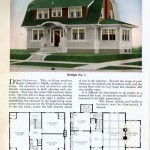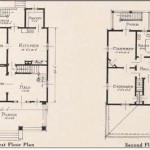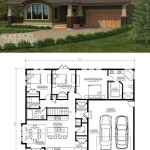Plans To Build A Tiny House: Comprehensive Guidelines in Indianapolis, Indiana
The burgeoning tiny house movement has captured the imagination of individuals across the globe, and Indianapolis, Indiana, is no exception. The appeal of simplified living, reduced environmental impact, and financial freedom draws many to consider constructing their own miniature abodes. However, undertaking such a project requires meticulous planning, adherence to local regulations, and a comprehensive understanding of the construction process. This article provides guidelines for individuals considering plans to build a tiny house in Indianapolis, focusing on the key aspects that need to be addressed before embarking on this journey.
Building a tiny house is not merely scaling down a conventional house plan. It is a distinct undertaking with unique challenges and opportunities. Successful tiny house construction necessitates a firm grasp of spatial efficiency, resource management, and structural integrity. Before even picking up a hammer, prospective tiny homeowners must navigate a complex web of zoning laws, building codes, and financing options.
Navigating Indianapolis Zoning Regulations and Building Codes
One of the first, and arguably most critical, steps in planning a tiny house project in Indianapolis is to thoroughly research and understand local zoning regulations and building codes. Indianapolis operates under the jurisdiction of Marion County, and the Unified Development Ordinance (UDO) dictates land use and development standards. Understanding the UDO is paramount to ensure that tiny house plans align with legal requirements.
The most immediate concern is determining where a tiny house can be legally situated. Zoning districts dictate the types of structures permitted on a given property. Single-family residential zones might seem like an obvious choice, but it is crucial to scrutinize the UDO for minimum square footage requirements. Many traditional zoning regulations stipulate a minimum size for dwellings, which may exclude tiny houses by definition.
Furthermore, the regulations regarding Accessory Dwelling Units (ADUs) warrant exploration. While a tiny house might not qualify as a primary residence in certain zones, it could potentially be permitted as an ADU. However, ADU regulations often come with stipulations regarding size, occupancy, and proximity to the main dwelling. Careful examination of these stipulations is essential.
Beyond zoning, building codes govern the construction standards of all structures, including tiny houses. The Indiana Residential Code, based on the International Residential Code (IRC), outlines the requirements for structural integrity, electrical systems, plumbing, and HVAC systems. Tiny houses must adhere to these codes to ensure safety and habitability. Obtaining the necessary permits from the Department of Metropolitan Development is a prerequisite for any construction activity. Failure to comply with building codes can result in fines, delays, and even the forced removal of the tiny house.
It is highly recommended to consult with local building officials and zoning administrators early in the planning process. These experts can provide guidance on interpreting the regulations and navigating the permitting process. Engaging a knowledgeable architect or contractor experienced in tiny house construction can also prove invaluable in ensuring compliance with all applicable codes and regulations. Regular communication with these professionals can mitigate potential roadblocks and ensure a smooth construction process.
Designing for Efficiency and Sustainability
The allure of tiny house living often stems from a desire for a more sustainable and minimalist lifestyle. Designing a tiny house that embodies these principles requires careful consideration of space utilization, energy efficiency, and material selection. Every square inch must be optimized to maximize functionality without sacrificing comfort.
Space-saving strategies are paramount. Multi-functional furniture, such as sofa beds and folding tables, can transform a living area into a bedroom or dining room with ease. Vertical storage solutions, like shelves and lofts, can capitalize on unused vertical space. Built-in storage compartments, concealed within walls or under floors, can further enhance space efficiency. The key is to design with purpose, ensuring that every element serves multiple functions.
Energy efficiency is not only environmentally responsible but also financially prudent. Incorporating energy-efficient appliances, LED lighting, and high-performance insulation can significantly reduce energy consumption. Opting for a mini-split HVAC system can provide efficient heating and cooling within the limited space. Strategically positioning windows to maximize natural light and ventilation can further reduce reliance on artificial lighting and air conditioning. Using smart home technology, such as programmable thermostats and smart lighting systems, can optimize energy usage and minimize waste.
Sustainable material selection is crucial to minimizing the environmental impact of the tiny house. Utilizing reclaimed wood, recycled materials, and sustainably harvested lumber can reduce the demand for virgin resources. Choosing low-VOC (volatile organic compound) paints and finishes can improve indoor air quality. Incorporating rainwater harvesting systems and composting toilets can further reduce the environmental footprint of the tiny house. When selecting materials, prioritize durability and longevity to minimize the need for replacements and repairs. Careful planning and design can transform a tiny house into a model of sustainable living, minimizing its impact on the environment.
Financing and Construction Considerations
Securing financing for a tiny house project in Indianapolis can present unique challenges. Traditional mortgage lenders may be hesitant to finance structures that fall outside the conventional definition of a house. Therefore, prospective tiny homeowners must explore alternative financing options.
Personal loans, lines of credit, and RV loans are common financing avenues for tiny house construction. Personal loans and lines of credit offer flexibility but often come with higher interest rates. RV loans may be an option if the tiny house is built on a trailer and meets the requirements for a recreational vehicle. However, RV loans may restrict the use of the tiny house to designated RV parks or campgrounds. Exploring crowdfunding platforms and seeking grants from organizations that support sustainable housing initiatives can also provide valuable funding opportunities.
The construction process itself demands meticulous planning and execution. Choosing between building the tiny house independently or hiring a contractor is a crucial decision. Building independently can save money but requires significant time, skill, and dedication. Hiring a contractor ensures professional expertise but comes with a higher cost. If opting for a contractor, thoroughly vet potential candidates, check their references, and ensure they have experience in tiny house construction.
A solid budget is essential for managing expenses and avoiding cost overruns. Create a detailed budget that includes all anticipated costs, such as materials, labor, permits, and appliances. Contingency funds should be allocated to cover unexpected expenses. Regularly track spending and compare it to the budget to identify potential areas for cost savings. Prioritizing essential features and deferring non-essential upgrades can help stay within budget. Thorough planning and diligent financial management are crucial for successfully completing the tiny house project without exceeding financial constraints.
Furthermore, consider the long-term implications of building a tiny house. Resale value, insurance, and property taxes are important factors to consider. Research comparable sales of tiny houses in Indianapolis to get an idea of potential resale value. Consult with insurance providers to determine the appropriate coverage for the tiny house. Understand the property tax implications of owning a tiny house, as they may vary depending on the location and classification of the structure. Addressing these long-term considerations can help ensure the sustainability and financial viability of the tiny house investment.

Nuway Portable Buildings

Tiny Home Regulations In Indiana The Complete Guide

Tiny Home Regulations In Indiana The Complete Guide

Timeless Tiny Homes Custom Home Builder In Indiana

Nuway Portable Buildings

Nuway Portable Buildings
Best Tiny Home Builders In North Carolina Newhomesource Com

Timeless Tiny Homes Custom Home Builder In Indiana

Shed Permits In Indiana Sunrise Structures

Timeless Tiny Homes Custom Home Builder In Indiana
Related Posts








